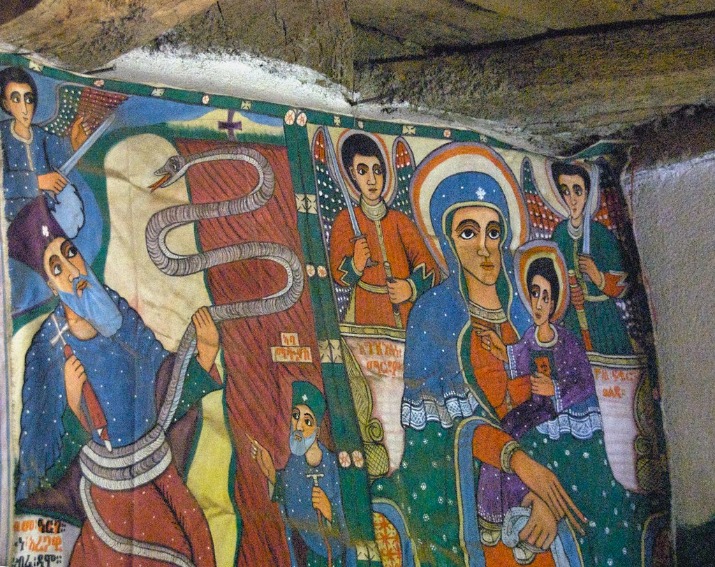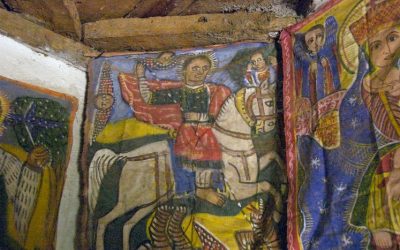Historical Background of the Ethiopian Calendar
The Ethiopian calendar, also known as the Ge’ez calendar, has a rich historical background rooted in ancient Ethiopian tradition and religious practices. It is believed to have been derived from the Coptic calendar, which itself traces back to the Egyptian ancient calendar system. Historically, the calendar has played a crucial role in shaping Ethiopia’s cultural identity, religious observances, and civil life. Its unique structure, including the 13 months and its divergence from the Gregorian calendar, reflects Ethiopia’s distinctive heritage and continued adherence to old Orthodox Christian customs.
Origins of the Ethiopian Calendar
The Ethiopian calendar is one of the oldest and most unique calendar systems in the world, with origins that date back to ancient times. It reflects Ethiopia’s rich cultural and religious history, particularly its connection to the Coptic Orthodox Church and the ancient Egyptian calendar system.
- The origins of the Ethiopian calendar can be traced to ancient Alexandrian and Coptic traditions, which themselves are derived from the ancient Egyptian solar calendar. This calendar was used to determine religious festivals and agricultural activities.
- The calendar’s structure and calculations were influenced by the Alexandrian church, which adopted a solar year consisting of 365 days, divided into 12 months with 30 days each, plus a 13th month called Pagumē with 5 or 6 days during leap years.
- The Ethiopian calendar also incorporates a different calculation for determining the Annunciation of Jesus Christ, leading to a different year count than the Gregorian calendar. It is currently approximately 7 to 8 years behind the Gregorian calendar due to differences in calculations of the Annunciation event.
- Historically, the calendar was used primarily by Ethiopian Orthodox Christians and was linked to religious observances and agricultural cycles, maintaining its importance throughout Ethiopia’s history as a means to organize societal life.
- Despite foreign influence and modernization efforts, the Ethiopian calendar remains a vital part of Ethiopia’s national identity and cultural heritage, symbolizing the country’s ancient roots and religious traditions.
Influences from Ancient Egyptian and Coptic Calendars
The Ethiopian calendar has a rich historical background that reflects its ancient origins and cultural influences. It is primarily based on the Coptic calendar, which itself traces back to the ancient Egyptian calendar system. The ancient Egyptian calendar, one of the earliest known solar calendars, was developed to track the annual Niles inundation and agricultural cycles. Elements of this calendar were incorporated into the Coptic calendar through early Christian influences, and subsequently, the Ethiopian calendar evolved from these traditions. The Ethiopian calendar is notable for its unique structure, including a 13-month year consisting of 12 months of 30 days and an additional month called Pagumē of five or six days, depending on whether it is a leap year. The calendar’s calculation of the year and its month divisions have retained much of their ancient Egyptian legacy, blending it with religious and cultural practices to create a distinctive system used for both religious and civil purposes in Ethiopia today.
Development through the Ages
The Ethiopian calendar, also known as the Ge’ez calendar, has a rich historical background that dates back over a millennium. It is rooted in ancient Coptic-Egyptian traditions and was influenced by the Alexandrian calendar system, which itself derived from the ancient Egyptian solar calendar. The Ethiopian calendar is distinctive for its calculation of the year, which is approximately seven to eight years behind the Gregorian calendar, and for its unique system of calculating leap years. Throughout the centuries, the calendar has evolved gradually, adapting to religious and cultural needs while preserving its traditional astronomical calculations.
Development through the ages saw the Ethiopian calendar becoming an integral part of Ethiopian society, deeply intertwined with the Ethiopian Orthodox Tewahedo Church and national identity. The calendar’s structure includes 13 months: 12 months of 30 days each and an extra month called Pagumē, which varies in length depending on the leap year cycle. Historically, the calendar served not only as a means of keeping track of time but also as a vital tool for religious festivals, agricultural activities, and societal functions.
Over time, the Ethiopian calendar has maintained its unique features, such as the calculation of New Year coinciding with September 11 or 12 in the Gregorian calendar, depending on the leap year. Despite the modernization pressures and the adoption of the Gregorian calendar for international purposes, Ethiopia continues to rely heavily on its traditional calendar, which remains a testament to its ancient and cultural heritage. The development of the Ethiopian calendar reflects a blend of astronomical, religious, and cultural influences, making it a distinctive historical symbol of Ethiopia’s enduring heritage.
Structure of the Ethiopian Calendar
The Ethiopian calendar is a unique and ancient system of measuring date and time, distinct from the Gregorian calendar used internationally. It consists of 13 months, with 12 months of 30 days each and an additional month called Pagumē that has 5 or 6 days depending on whether it is a leap year. This calendar is grounded in the Coptic-Egyptian tradition and is approximately seven years and three months behind the Gregorian calendar. Understanding the structure of the Ethiopian calendar is essential for accurately tracking dates and cultural events in Ethiopia.
Year Count and New Year’s Day
The Ethiopian calendar is a unique system that reflects the country’s rich cultural and religious heritage. It is based on the ancient Coptic calendar and consists of 13 months: 12 months of 30 days each and an additional month called Pagume, which has five or six days in a leap year. The calendar’s structure is closely aligned with the Julian calendar but differs in calculating the year count. Ethiopia uses its own counting system, with the current year being approximately seven to eight years behind the Gregorian calendar, depending on the date. The New Year’s Day in Ethiopia, known as Enkutatash, falls on September 11th (or September 12th in a leap year) and marks the beginning of a new year, celebrated with traditional festivities, religious observances, and various cultural activities, symbolizing renewal and hope for the year ahead.
Months of the Year
The Ethiopian calendar is a unique calendar system used in Ethiopia, consisting of 13 months. There are 12 months of 30 days each, and an additional month called Pagumē that has 5 or 6 days in leap years. The calendar is approximately seven to eight years behind the Gregorian calendar, depending on the date. It is based on the Coptic calendar, with its own system of calculating years and months.
The months of the Ethiopian year are named as follows: Meskerem, Tikemet, Hidar, Tahsas, Ter, Yekatit, Megabit, Miyazya, Genbot, Sene, Hamle, Nehase, and Pagume. These months align with the Ethiopian Orthodox Church’s liturgical calendar and are widely used in Ethiopia for civil and religious purposes. The Ethiopian calendar also begins the new year on September 11th or September 12th during leap years, marking the start of the first month, Meskerem.
Number of Days in Each Month
The Ethiopian calendar is a solar calendar used in Ethiopia, comprising 13 months: 12 months of 30 days each and an additional month called Pagume with 5 or 6 days in leap years. Each year begins on Meskerem 1, corresponding to September 11 or 12 in the Gregorian calendar during leap years. The months are named differently than those in the Gregorian calendar, with unique names reflecting Ethiopian culture and tradition. This calendar is approximately seven years behind the Gregorian calendar and is used for both civil and religious purposes in Ethiopia.
Leap Year Rules
The Ethiopian calendar is a unique solar calendar used in Ethiopia, consisting of 13 months: 12 months of 30 days each and an additional month called Pagume with 5 or 6 days, depending on the year. The calendar is approximately seven years and three months behind the Gregorian calendar. The year starts on September 11th in most years, or September 12th during a Gregorian leap year. Leap year rules in the Ethiopian calendar are based on the calculation that every four years, an extra day is added to Pagume. Specifically, an Ethiopian leap year occurs every four years without exception, and when the year is divisible by 4, the last month gains an extra day. This system ensures the calendar remains aligned with the solar year over time, making it distinct from the Gregorian leap year rules that involve century exceptions.
Differences Between Ethiopian and Gregorian Calendars

The Ethiopian and Gregorian calendars are two distinct systems used to track dates, each with unique features and origins. Understanding the differences between these calendars provides insight into Ethiopian cultural and historical practices, as well as global timekeeping standards. This article explores the key distinctions between the Ethiopian and Gregorian calendars, particularly focusing on how they influence the measurement of dates in Ethiopia.
Year Difference and Calculation
The Ethiopian calendar differs significantly from the Gregorian calendar in terms of year count, months, and calculation methods. It is primarily used in Ethiopia for both civil and religious purposes, reflecting a unique cultural heritage. The Ethiopian calendar is approximately seven years and three months behind the Gregorian calendar, which is internationally recognized and used worldwide.
The Ethiopian calendar has 13 months: 12 months of 30 days each and one short month called Pagumē of 5 or 6 days during a leap year. In contrast, the Gregorian calendar has 12 months with varying days, totaling 365 days in a common year and 366 days in a leap year. The Ethiopian calendar’s new year begins on September 11th (or September 12th in a leap year), aligning with the Coptic calendar and Ethiopian Orthodox Church traditions.
The year difference is mainly due to the Ethiopian calendar’s calculation of the Annunciation of Jesus, which is its starting point. The Ethiopian calendar’s epoch is based on the Annunciation, believed to have occurred around 7-8 A.D. in the Gregorian calendar. Therefore, the Ethiopian year is calculated by adding approximately 7 to 8 years to the Gregorian year, depending on the month and day. For example, when it is 2024 in the Gregorian calendar, it is around 2016 or 2017 in Ethiopia, depending on the date. To convert a Gregorian year to an Ethiopian year, subtract 7 or 8 years, considering whether the date has passed the Ethiopian New Year. Conversely, to convert from Ethiopian to Gregorian, add 7 or 8 years, again paying attention to the specific date and month. This calculation ensures accurate conversion between the two calendars for any given date in Ethiopia.
Month Names and Numbering
The Ethiopian and Gregorian calendars differ significantly in their structure, month names, and numbering systems. The Gregorian calendar, widely used worldwide, has 12 months with fixed lengths, totaling 365 days in a common year and 366 days in a leap year. Its months are January through December. In contrast, the Ethiopian calendar also has 12 months plus an intercalary month called Pagumē, used to align the calendar with the solar year, totaling 13 months. The Ethiopian months are Meskerem, Tikimt, Hidar, Tahsas, Ter, Yekatit, Megabit, Miyazya, Ginbot, Sene, Hamle, Nehase, and Pagume. The Ethiopian calendar is approximately 7 to 8 years behind the Gregorian calendar and begins its new year on September 11 (or September 12 in a Gregorian leap year). Furthermore, the Ethiopian calendar starts the year on what is considered September 11 of the Gregorian calendar, and its month numbering begins from 1 to 13, whereas the Gregorian months are numbered from 1 to 12. These differences influence how dates are recorded, celebrated, and referenced within Ethiopia compared to international standards.
Start of the Year
The Ethiopian and Gregorian calendars differ significantly in their structure and the way they mark the start of the year, reflecting their unique cultural and historical backgrounds.
- The Ethiopian calendar is based on the Coptic calendar and consists of 13 months: 12 months of 30 days each and an additional month called Pagumē with 5 or 6 days in a leap year.
- The Gregorian calendar, used globally, has 12 months with varying lengths from 28 to 31 days.
- The Ethiopian calendar is approximately 7 to 8 years behind the Gregorian calendar, due to differences in calculating the birth year of Jesus Christ.
- The start of the Ethiopian year is on Meskerem 1, which falls on September 11 in the Gregorian calendar, or September 12 in leap years.
- The Gregorian calendar starts the new year on January 1, a tradition that is universally recognized worldwide.
Impact on Dates and Timekeeping
The Ethiopian calendar differs significantly from the Gregorian calendar, primarily in terms of year length, month structure, and starting points. The Ethiopian calendar has 13 months: 12 months of 30 days each and an additional month called Pagumē with 5 or 6 days in a leap year. It is approximately seven to eight years behind the Gregorian calendar, with the Ethiopian new year typically falling on September 11th or 12th. This difference impacts scheduling, holidays, and daily timekeeping in Ethiopia, making it essential for understanding local dates and cultural events. The divergence in calendars influences official documentation, religious observances, and international communication, requiring adjustments when converting dates between systems. Overall, the Ethiopian calendar’s unique structure affects how time is measured and recorded, impacting both social and administrative activities within Ethiopia and in interactions with external entities.
Cultural and Religious Significance of the Date
The date holds profound cultural and religious significance in Ethiopia, reflecting the country’s rich history and diverse traditions. As a nation with deep-rooted customs, Ethiopia’s calendar and associated dates play a vital role in religious ceremonies, national celebrations, and social identity. Understanding the cultural and religious importance of specific dates helps to appreciate Ethiopia’s unique heritage and the ways it shapes everyday life.
Ethiopian Orthodox Christian Celebrations

The date in Ethiopia holds profound cultural and religious significance, reflecting the country’s rich history and diverse traditions. For Ethiopian Orthodox Christians, specific dates are marked with important religious celebrations that reinforce their faith and community bonds. These occasions often involve elaborate rituals, fasting, prayer, and communal gatherings that emphasize spiritual renewal and cultural identity.
One of the most notable religious celebrations is Timket, which is the Ethiopian Orthodox Christian Feast of Epiphany. Celebrated on January 19th (or 20th in a leap year), Timket commemorates the baptism of Jesus Christ and is marked by grand processions, the blessing of water, and the ceremonial procession of the Ark of the Covenant replicas. Another significant celebration is Meskel, held on September 27th, which celebrates the discovery of the True Cross by Queen Helena. It features large bonfires, colorful processions, and communal festivities symbolizing faith and hope.
Throughout the year, Ethiopian Orthodox Christians observe numerous fasting periods, such as Lent and other minor fasts, which are integral to their spiritual practice and community cohesion. These dates are not only religious milestones but also opportunities for cultural expression through traditional music, dance, and cuisine. The synchronization of religious calendars with national and cultural events underscores the deep intertwining of faith and identity in Ethiopia.
Traditional Festivities and Events
The date in Ethiopia holds deep cultural and religious significance, reflecting the nation’s rich heritage and spiritual traditions. It often aligns with important religious festivals and historical events that play a central role in Ethiopian society. The Ethiopian calendar, which is based on ancient traditions, influences the timing of these celebrations, making the date a symbol of historical continuity and religious devotion.
Traditional festivities and events associated with this date include vibrant religious ceremonies, colorful processions, and communal gatherings. These celebrations often feature unique customs such as prayer services, traditional music and dance, and the preparation of special foods. People dress in traditional attire, and communities come together to honor their faith and heritage, making these events an integral part of Ethiopia’s cultural identity.
Importance in Ethiopian Society
The date holds profound cultural and religious significance in Ethiopian society, reflecting the deep-rooted traditions and spiritual beliefs that define the nation’s identity. Ethiopia follows the Ethiopian calendar, which is based on ancient Coptic traditions, resulting in unique celebration dates and observances that differ from Gregorian calendar events. Important religious festivals such as Timket (Epiphany), Meskel (Finding of the True Cross), and Fasika (Easter) are celebrated with great reverence, symbolizing faith, renewal, and community unity. These dates serve as a reminder of Ethiopia’s rich Christian heritage, particularly its ancient Ethiopian Orthodox Tewahedo Church, which plays a central role in shaping cultural practices and societal values. The observance of these dates reinforces social cohesion and preserves the nation’s historical and spiritual legacy, making them vital to Ethiopian national identity and cultural continuity.
Modern Use and Integration of the Ethiopian Date
The Ethiopian date system holds a significant place in the cultural and daily life of Ethiopia, reflecting its rich history and traditions. In recent years, there has been a growing effort to modernize and integrate the Ethiopian calendar into contemporary applications and technology. This fusion of traditional and modern practices allows for seamless communication, efficient scheduling, and the preservation of cultural heritage in a rapidly globalizing world.
In Education and Official Records
The modern use and integration of the Ethiopian date system in education and official records are essential for preserving cultural identity while ensuring administrative efficiency. Despite the dominance of the Gregorian calendar globally, Ethiopia continues to utilize its traditional calendar for various official and educational purposes to maintain cultural heritage and facilitate local practices.
- In the education sector, Ethiopian schools incorporate the Ethiopian calendar for scheduling academic years, holidays, and national exams, reinforcing cultural identity among students.
- Government offices and official records, such as birth certificates, marriage licenses, and government documentation, often record dates according to the Ethiopian calendar to preserve historical and cultural authenticity.
- Many Ethiopian institutions provide dual dates—both Ethiopian and Gregorian—to accommodate international interactions and usages while honoring local traditions.
- Digital systems and administrative software are increasingly being adapted to include Ethiopian dates, enabling seamless integration into modern record-keeping and data management processes.
- In education, textbooks and academic materials often include explanations of the Ethiopian calendar system, helping students understand its significance and calculation methods.
Business and Government Functions
The Ethiopian date system continues to play an important role in modern Ethiopia, seamlessly integrating with business and government functions to ensure cultural relevance and administrative efficiency. Many government institutions, including the civil service and legal sectors, officially recognize both the Gregorian and Ethiopian calendars, facilitating official documentation and administrative processes. Businesses, especially those operating locally, often use the Ethiopian calendar for financial reporting, scheduling, and project planning, maintaining cultural continuity. Digital platforms and software increasingly incorporate features to convert and display both dates, enhancing usability for users who navigate between different date systems. This integration supports the nation’s efforts to respect tradition while embracing modern technologies, promoting smoother coordination across various sectors and fostering national identity. Overall, the Ethiopian date system remains a vital component of contemporary administrative and commercial activities, reflecting Ethiopia’s unique cultural heritage in everyday operations.
International Interactions and Challenges
The modern use and integration of the Ethiopian date system within international interactions present a unique blend of cultural preservation and practical adaptation. While Ethiopia continues to rely on its traditional calendar, which is approximately seven years and three months behind the Gregorian calendar, efforts have been made to synchronize dates for international business, diplomacy, and technological purposes. This integration facilitates smoother communication and coordination across borders, especially in sectors such as trade, education, and digital technology. However, challenges remain, including the need for widespread awareness, the standardization of date formats, and the limited availability of software and systems that fully support the Ethiopian calendar. Overcoming these hurdles is essential to enhance Ethiopia’s participation in global activities while maintaining its cultural identity.
Contemporary Issues and Developments
Understanding the concept of date in Ethiopia involves exploring both the cultural significance and the modern adaptations of timekeeping within the country. As Ethiopia maintains its unique calendar system alongside global standards, contemporary issues surrounding date and time reflect broader social, technological, and cultural developments. These issues highlight the ongoing balance between tradition and innovation in Ethiopia’s evolving landscape.
Calendar Reform Debates
Calendar reform debates in Ethiopia have gained attention due to the unique structure of its traditional calendar and the country’s effort to align its timekeeping with modern global standards. The Ethiopian calendar, which is approximately seven years and three months behind the Gregorian calendar, reflects Ethiopia’s rich cultural history and Orthodox Christian heritage. Many experts and policymakers discuss whether adopting a more standardized international calendar could facilitate trade, communication, and global integration, while others emphasize the importance of preserving Ethiopia’s cultural identity through its traditional calendar system.
- The Ethiopian calendar consists of 13 months: 12 months of 30 days each and an intercalary month of 5 or 6 days during leap years.
- Currently, there is ongoing debate over whether to maintain the traditional calendar or switch to the Gregorian calendar for official and civic purposes.
- Proponents of reform argue that integrating the Gregorian calendar could simplify international dealings and improve synchronization with global events.
- Opponents believe that maintaining the traditional calendar preserves Ethiopia’s cultural and religious heritage, contributing to national identity.
- The Ethiopian government and cultural leaders continue to discuss potential reforms, considering economic, social, and religious implications.
Digitization and Technology Adoption
Contemporary issues and developments in Ethiopia are significantly influenced by digitization and technology adoption, especially in administrative and governmental sectors. As the country continues to modernize, digital infrastructure is expanding, enhancing communication, service delivery, and transparency. The adoption of digital tools in sectors such as education, healthcare, and finance enables greater accessibility and efficiency, addressing longstanding challenges faced by the nation. Additionally, Ethiopia’s efforts to integrate technology into its governance processes aim to promote economic growth, improve civic engagement, and streamline public services. However, these developments also bring challenges related to digital literacy, cybersecurity, and infrastructure inequality. Overall, digitization is playing a vital role in shaping Ethiopia’s trajectory towards greater development and modernization, reflecting a broader global trend of embracing technological advancements to improve societal outcomes.
Global Recognition and Legal Status
In Ethiopia, the observance of the date is deeply rooted in the country’s rich cultural and religious traditions, which sometimes differ from international standards. Contemporary issues regarding the date include debates over the adoption of the Gregorian calendar versus the Ethiopian calendar, which is approximately seven years and three months behind the Gregorian calendar. This discrepancy affects various aspects of society, including business, education, and government operations, leading to calls for modernization and standardization while respecting cultural heritage. Globally, Ethiopia’s unique calendar and date system are recognized as part of its national identity, though they pose challenges for international coordination and communication. Legally, Ethiopia maintains its customary calendar system as an official measure, but efforts are ongoing to harmonize it with global practices to facilitate international cooperation and economic development while preserving cultural integrity.





0 Comments